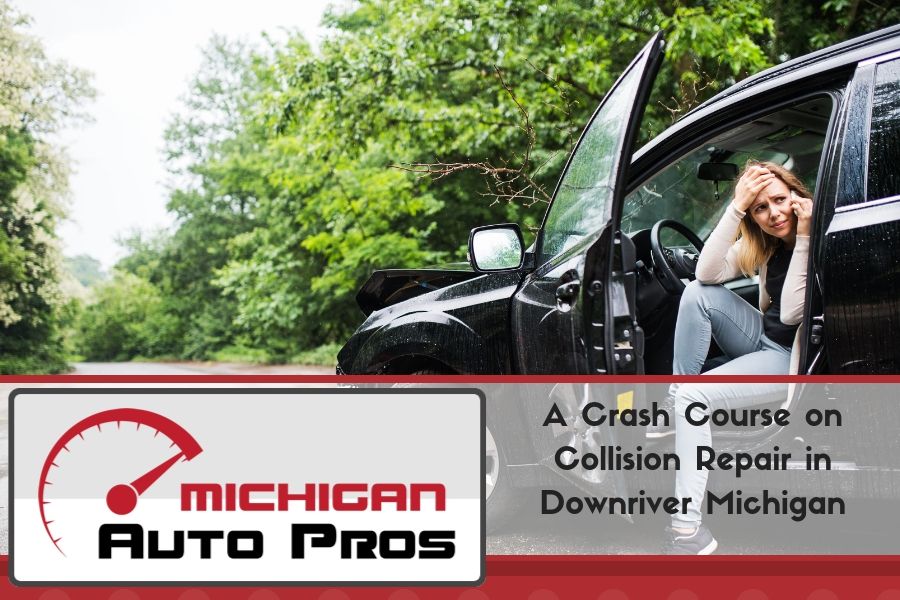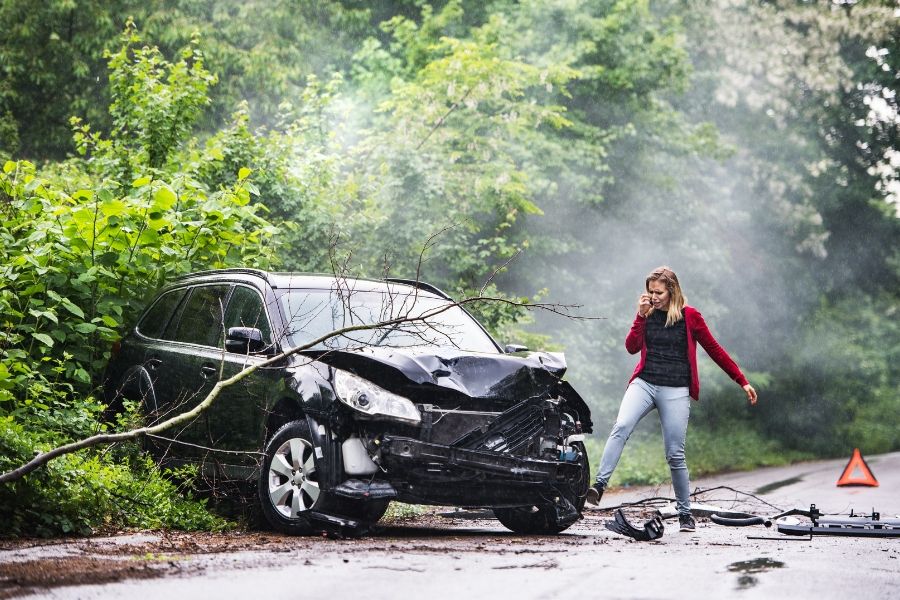Car accidents are inconvenient at best. As we venture into the summer months and the roads swell with motorists, the chance of an accident increases. Unfortunately, drivers are far more likely to budget for routine maintenance than they are collision repair, which can make car accidents a costly ordeal as well as the collision repair in Southgate Michigan after the accident. If you’ve been in an accident, the physical wellbeing of yourself and those around you is a top priority. Hopefully, you’ve walked away unscathed, but once the dust settles the real work begins. Let’s look at a few post-accident options to help you better understand what to do if you should find yourself in an accident.
A Crash Course on Collision Repair in Downriver Michigan
Understanding the Misconceptions
To be clear, your insurance may or may not cover all damages. This underscores the importance of fully understanding your coverage before hitting the road. If you have collision included in your insurance plan, the chances are good that you provider will cover at least some of the costs. However, this only includes damages incurred after the accident. Theft and vandalism, for example, would be covered by comprehensive insurance, not collision. Depending on where you live, the cost of the accident may also be covered by the other party’s insurance, especially if they were at fault.
When considering where to go for a repair, many drivers believe they must go with the collision center recommended by their insurance provider. This simply isn’t true. Legally, you have the right to shop for your own repair center. However, many collision repair shops partner with insurance agencies in order to provide reduced costs and faster turnaround. You can certainly ask your insurance provider for a recommendation, but a little shopping around never hurts to ensure that the shop you go with is in your best interest as well.
It’s also important to understand that the dealership is not the only option should you want your vehicle fixed like new. The parts that come with your vehicle when it’s showroom-new are known as original equipment manufacturer, or “OEM”. Replacement parts that aren’t identical to what the car originally shipped with are called “aftermarket”. There is a longstanding belief that OEM parts can only be obtained through the dealer. Today, many independent shops have access to OEM parts, as well as aftermarket. While aftermarket parts can offer similar (and sometimes better) performance than OEM at a considerable savings, only OEM qualifies as original should you want your car to be truly like-new. The overall condition or value of your car prior to the accident should help guide you in selecting OEM or aftermarket parts, if given the option.

Industry Terms
Navigating the insurance landscape can be difficult. Below are a few of the more common terms you’re likely to encounter when working with automotive insurance.
- No Fault Insurance – This type of insurance provides coverage in absence of determination of fault. Some states require providers to pay losses to a policyholder regardless of who caused the accident.
- Deductible – A deductible is the portion of a repair that the policyholder must pay for out-of-pocket. For example, if you need a $2000 repair and have a $500 deductible, your coverage would require you to pay the first $500. It’s important to understand that if you were in a small fender bender, the cost of repair could be lower than the deductible. Such circumstances would generally leave the policyholder having to pay for the repair themselves.
- Exclusions – Unsurprisingly, exclusions refer to anything not covered by your insurance policy. For example, of you like to take your car to the track once or twice a month, any damage incurred while driving on a closed course would generally not be covered by typical car insurance.
- Liability Coverage – This is generally the most basic and minimum required insurance. It covers property damage and personal injury caused to the other party in an accident, but not for you or your passengers.
- Comprehensive Coverage – Comprehensive coverage covers damages incurred outside of an accident. Vandalism or storm damage, for example, would be covered under comprehensive insurance.
- Collision – Collision covers costs due to damage to your vehicle when in an accident with another, up to your policy limit.
- Uninsured Motorist Coverage – This type of insurance covers costs associated with an accident where the other party is uninsured and cannot afford to pay for your repair bills or medical costs out-of-pocket.
Is It Totaled?
The term “totaled” is straightforward but often used incorrectly when referencing what appears to be a badly damaged vehicle. In short, a car is totaled if the repair costs exceed the vehicle’s value. An insurance provider will generally “total” a vehicle and choose to pay out the value of the car when it would end up costing more to repair it.
While a check for a lump sum and a new ride on the horizon might seem nice in theory, totaling becomes more of an issue for older cars which may have true values exceeding their dollar figure. For example, a 20-year-old car in great mechanical condition with low mileage may not have high book value due to its age and possible multiple owners, but nonetheless serves as a reliable and affordable means of transportation. However, because of its lower dollar value, an otherwise simple and straightforward repair may end up exceeding the value of the car and relegate an otherwise capable vehicle to totaled status.
The First Steps
Understanding how your insurance works helps prepare you for when it’s most needed. So, you’ve been in an accident – what next?
Obviously, medical attention is your top priority. Assuming injuries are minor or (hopefully) nonexistent, you should call the police and file a report. Ideally, an officer is nearby and can help moderate the situation and direct traffic if needed. Be sure to exchange contact information with the other parties involved; take photos of the vehicles involved and, if possible, the road conditions.
Bystanders may offer help and can serve as witnesses who can give statements to the police. If you can, be sure to talk to all who witnessed the accident and try to write down every detail you remember.
Depending on the circumstances, you may be considering a lawyer. You’ll need to find one in the state where the accident happened. If considering legal representation, be sure to give statements only to the police, even if insurance adjusters show up. It’s also generally not advised to admit fault, even you believe you are at fault. Something as benign as a simple apology could be perceived as an admission of guilt depending on how the legal process unfolds.
Once the dust settles and you’re ready to repair, give Good Care Auto a call. We offer free estimates and highly competitive rates, with skilled collision technicians ready to handle the smallest bumps to the largest fabrication jobs. Nobody wants to be in an accident, but should one happen Good Care Auto is standing by to ease the process and get you back on the road asap. Let Good Care Auto make your car like new again, call us today at (734) 285-1188!
